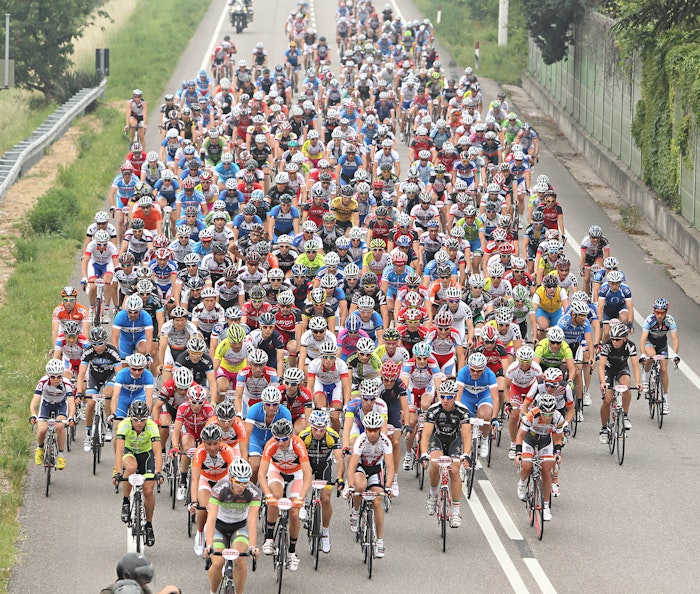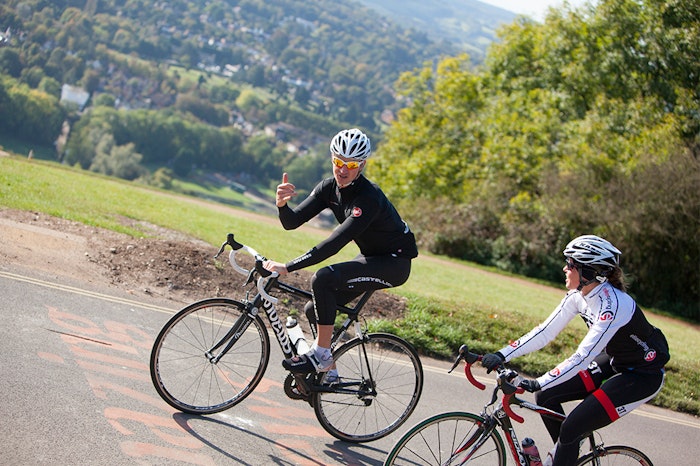Are you ready to race?
Have you been at a local bike race or watched a bike race on television and thought; that looks like fun, maybe I will try it? If so, here are a few tips and things to consider that will help you on your way to the start line.
First step is to decide what race style to participate in.
Time trials (TT) can be a great way to start. TT courses are generally safe, come in a variety of distances and are often open to the public by age group, so anyone can participate. It’s the rider against the clock, so an excellent way to develop speed and learn about aero dynamics and equipment, as well as your personal threshold points; how hard can you go and for how long. The riders race alone with 30 second to 1 minute intervals between rider starts. This is nice if you aren’t used to large group riding techniques. Team Time Trails also exist and require 3-4 riders to race against the clock in perfect formation and at maximum speed—a great spectator sport! The information a rider can learn at time trials is so important to achieving peak fitness and race goals; invaluable to know before entering other types of races.
Criteriums are races that are fast and furious. Lasting in duration from 30-90 minutes depending on the categories these races take place usually on closed courses, in downtown areas, industrial parks or even parking lots. Racing is fast and riders are grouped together elbow to elbow, so pack or bunch riding skills are a must for these events. There are many categories for these races allowing riders who are newer to be separated from the more experienced racers. Racers can be “cut” from the course if they aren’t able to stay with the bunch. Developing skill to race a criterium takes time, but many local clubs have weekly training crits and group rides to help practice these skills.
Road or circuit races are similar to criterium in that bunch riding skill is required, but these races are on open roads; generally race lane is closed and possibly there is a lead car, but traffic is sometimes able to enter the course after the race has passed. Studying the race bible and knowing the race rules is crucial. Road races can last anywhere from 1 hour up to 3-5 hours and beyond for Grand Tours. Fitness is a must and hopefully as a rider, you will have a team that you can work with in order to gain the best result in the race. Multiple categories are available and these are based on skill and experience from beginner racing to Pro level.
Stage races combine all of the above. Stage races run 2-7 days and involve a variety of courses; sometimes changing towns/venues/routes for each course. These require excellent fitness and skill to complete. They also provide riders an opportunity to experience a variety of racing and better choose where their individual talents shine. Again, best raced with as a team sport.

Gran Fondos are an excellent way to race without all of the stress of other types of races. Generally these races have riders wear a timing chip which begins recording at the start and ends when you cross the finish line. These races vary in mileage and difficulty, but exist all over the USA and Europe. Distances are generally 65 and 100 miles. Once again it’s the rider against the clock, but also the rider can compare their times to all the other riders in the field. Because these take place over longer course they can be ridden as a group or as an individual or smaller team sport. Unlike other races these races do provide rest stops for refueling and allow non-racers to enter as well. A perfect venue for families who like to ride together. Gran Fondos are a great venue for becoming accustomed to a mass start event and to riding long distance. These take place on open roads, generally only the start is closed road or police guided, so road riding knowledge and skill is required.
Track racing takes place on a velodrome course, sometimes inside, sometimes outside depending on the weather and availability of tracks. Track racing requires not only skill, but knowledge of track rules and equipment. It’s also a great training opportunity to prepare you for all of the other types of racing that exist. If you are interested in track racing the best place to start is your local track. Most tracks have clinics and certification processes in place to help get you started.
Getting Race Fit Ready
Once you’ve decided on what type of race you will participate in, signed up and studied the rules, then it’s time to think about preparing your fitness and your equipment. So often most will want to purchase a new bike. Buying a bike is lots of fun and having a new, fast, light racing bike is great, but chances are improvements in your fitness and skill will provide a better result in your first races than a new bike will. If you don’t yet have a bike, then bike purchase can be narrowed down by the type of racing you want to do, so that will be helpful.
Cycling fitness can be improved for the most part by simply riding more, climbing hills and pushing yourself to go harder/faster. But in this world of science and sports knowledge there’s lots more to do if you truly want to excel at the sport. Many of the Gran Fondos will have training programs available to purchase that will help you to be prepared for their particular course. This is a great way to start “training” for cycling. Many bike shops host clinics and group rides that teach group riding skills and necessary information like changing a flat tire and what to wear. Club riders often have a great deal of experience on the various courses and many times offer lots of riding opportunities that help put a rider more at ease in the bunch. As you progress in your fitness and riding the next level would be to hire a coach to design and implement a specific training program based on your fitness, your goals, your equipment and the desired result you want to achieve. In the USA cycling coaches are certified by USAC.org, but note: not all coaches are certified as they may be former racers/Olympians/existed before certification came into play and/or are sports physiologists/athletic trainers who have educational backgrounds that qualify them to coach. Do your research, ask for referrals and interview your coach before signing on. A good coach will help you achieve your ultimate goal in the healthiest fashion.

Learn and Educate
Lastly choose equipment that will best enhance your ability to succeed. Start with what you have, but work to learn more about components, clothing, gear, bikes and computers so that when your budget allows you can make educated choices that will result in gains you can see at your next race. Study race bibles and follow your local racing organization to learn rules of do’s and don’ts at races. Showing up at a criterium with a time trial bike will not only be a bad choice, but you won’t be allowed to race...know before you go.
Choosing to race your bike is awesome whether you are 8 or 80 years old. Just be sure to do your homework so you can have the best experience possible and then you’ll keep coming to the start line!





